Whether you play video games or not, they’ve become an integral part of our culture. For some, it’s hard to imagine a world without video games—the chup-chup-boop of an arcade legend like Space Invaders or the growling “Finish Him!” in Mortal Kombat can be as evocative as a Michael Jackson or Beatles tune.
Representing multiple generations of gamers, TIME’s tech team put more than 150 nominees through a multistage ranking process to compile a cross-section of gaming’s best ideas across nearly four decades. Here are our picks for the 50 greatest video games of all time.
Read more: How the Super Nintendo still influences video games
50. King’s Quest III: To Heir Is Human

In the 1980s, the years that led up to Nintendo’s reign were dominated by PC titles, and of these none were better imagined than Sierra’s. When honoring their adventure line, critics typically laud the original King’s Quest. But it’s the third installment released in 1986 that deserves the most acclaim, because it was also twice as big as the first two installments, and as clever as any in the series. Following the adventures of Daventry’s 17-year-old Prince Alexander, the game hit closer to home with its primary players, who like it or not were pretty much boys. Yet despite the outmoded graphics (or maybe because of them), the keyboard-controlled adventure is still a joy to play (try it yourself). From amassing all the ingredients to make potions, to avoiding the wizard’s evil black cat, to stealing the pirate’s treasure, it’s pure magic.
49. Dota 2

The improbable sequel to a fan mod for a Blizzard game that came out in 2002, Dota 2 stormed the e-sports scene in 2013 with its sophisticated twist on real-time resource management and turf control. Arguably the pinnacle of the multiplayer online battle arena genre (or MOBA, which is just another way of saying “competitive real-time strategy game”), it sees two teams of five jockey for sway over lush, jungled terrain beset by ever-spawning computer armies, locking horns at a river that cuts diagonally across a symmetric map. Difficult to master but thrilling to watch, Dota 2 matches unfold like frenetic attention-deficit sprees, camera views pinballing around battlefields flush with antagonists converging on dozens of flashpoints, as players battle to demolish the other team’s “ancient.”
48. Angry Birds
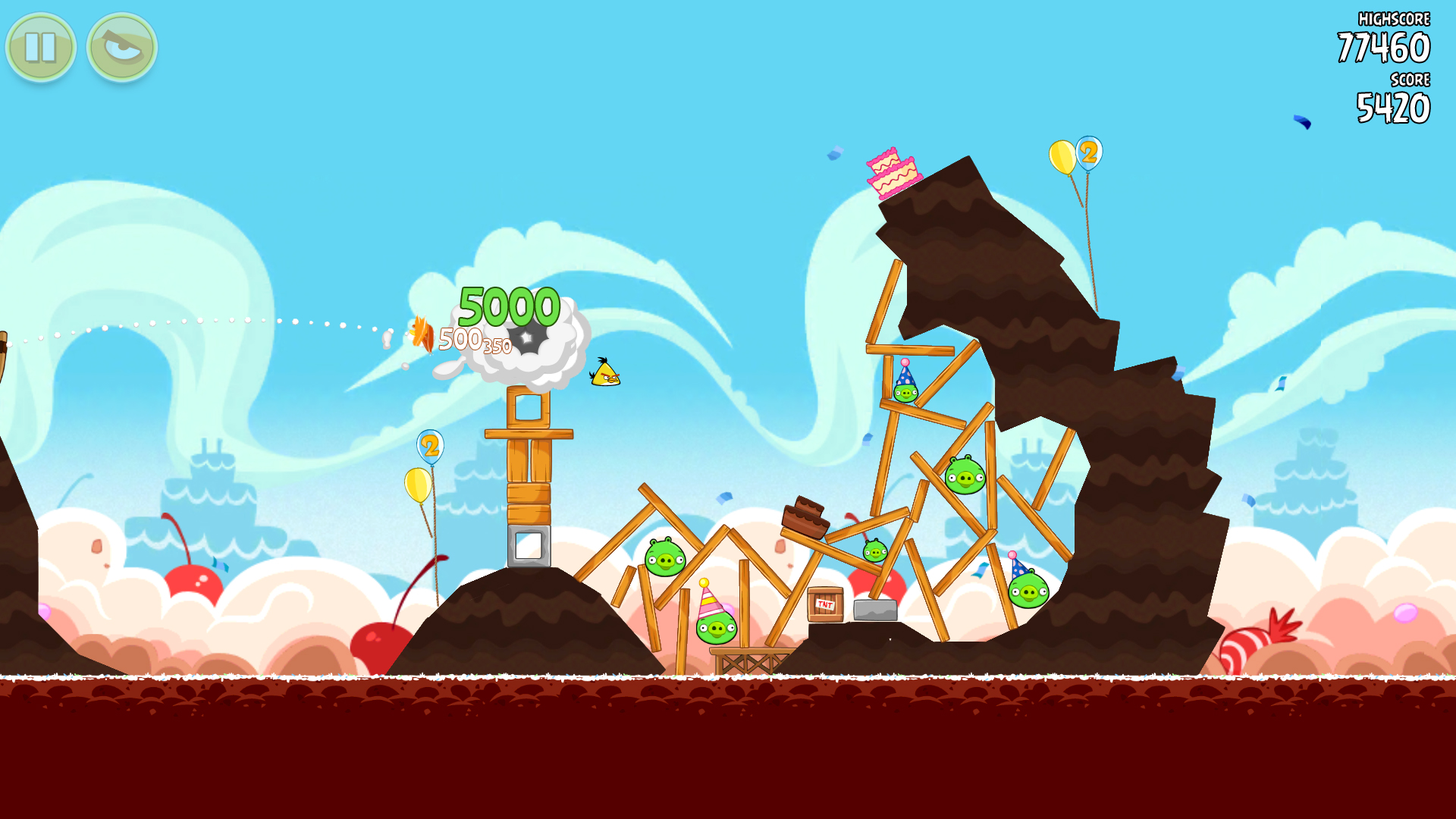
Rovio’s debut 2009 mobile game, now one of the most recognizable franchises in the world, definitely benefitted from being one of the earliest titles for the iPhone. But the studio’s quirky avian-flinging physics puzzler—players have to slingshot roly-poly birds at likewise rotund, entrenched pigs—also honed in on key elements of smartphone gaming’s then-nascent purview: bite-sized levels for on-the-go play, easy to pickup (if grueling to master) gameplay, and eventually a free-to-play biz model built on micro-transactions. It’s safe to say Angry Birds established the template for all the untold numbers of mobile games vying for our e-wallets since.
47. Guitar Hero
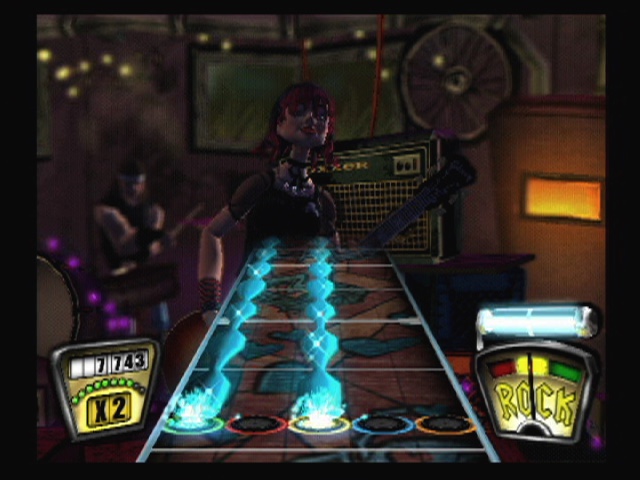
Guitar Hero reanimated the music video game genre when it launched in 2005, magically transmogrifying players into bona fide fret-shredding, tremolo-slapping Rock Gods. Sure, you had to provide your own sweatbands, eyeliner and hair extensions. But for the price of the game and its eponymous accessory, players hammering buttons on faux guitars were able to rhythmically glimpse what it might feel like to be a Stevie Ray Vaughan or Jake E. Lee. While games like Dance Dance Revolution had proven popular with smaller audiences, it was Guitar Hero‘s rolling collection of classic and modern rock anthems that drove it to mainstream accolades (to say nothing of all the impromptu house parties).
46. Resident Evil 4
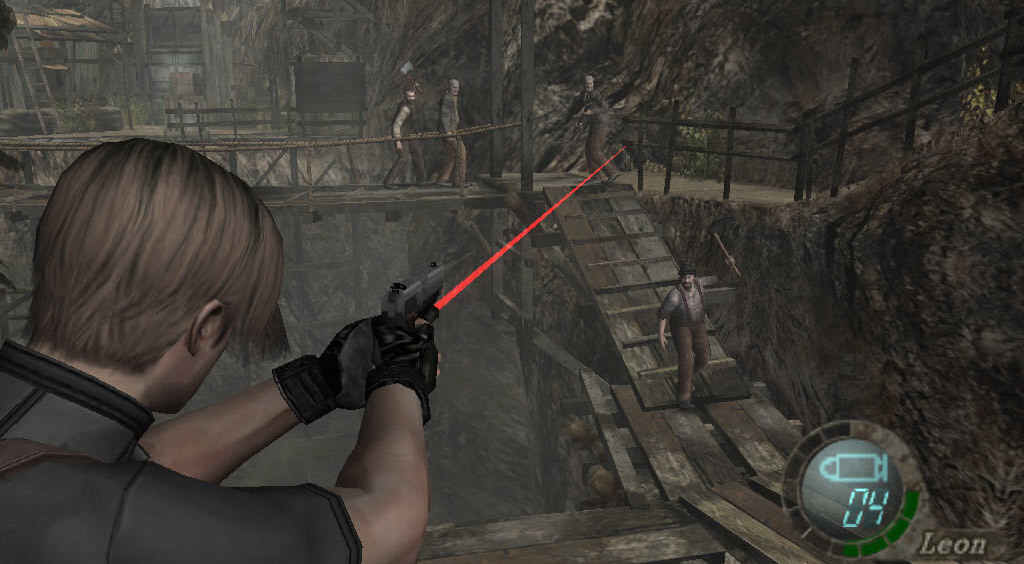
Who can forget the moment they first shot the face off a possessed farmer in Resident Evil 4, only to conjure a lively Lovecraftian horror with tentacles squirming from its neck? This was Resident Evil reborn, its creaky fixed perspectives and klutzy directional controls supplanted by a freer over-the-shoulder, shoot-first perspective that felt at once elegant and intuitive. Instead of cheap haunted house scares in claustrophobic spaces, the story shifted to organic exploration of delightfully creepy areas, punctuated by frenzied scrambles to fend off the series’ most inspired adversaries. Capcom’s timely embrace in 2005 of action-oriented principles stole nothing from the game’s cheerless ambience, and actually amplified the sense of trudging through a phantasmagoric nightmare.
45: Gran Turismo 3: A-Spec

As Microsoft Flight Simulator to the flight sim genre, so Polyphony Digital’s Gran Turismo series to hi-fi motorsport hot-rodding. Of all the Gran Turismo games, 2001’s Gran Turismo 3: A-Spec for the PlayStation 2 remains the series’ apotheosis, a madly ambitious encyclopedia of lovingly modeled vehicles and vistas surpassing the wildest gear nut fantasies. Here was a racing game to rule all others, that on its surface promised endless championship events framed by thrillingly realistic physics and painstakingly replicated visuals, but that also catered to armchair grease monkeys, who might spend hours fine-tuning then gawking at their drop-dead gorgeous rides.
44. Super Smash Bros.
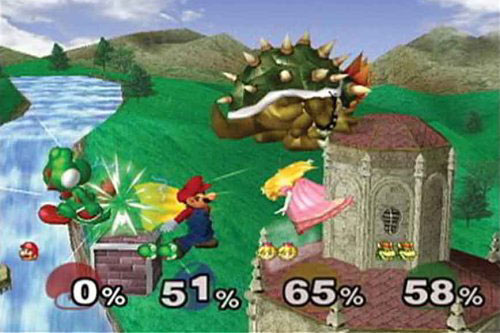
Since the original launched on the Nintendo 64 in 1999, the Super Smash Bros. games have become no-brainers for Nintendo fans. The game, which borrows from Nintendo’s stable of iconic characters, introduced something radical to the fighter genre: Rather than pounding the bejesus out of your opponents until they bow out, you’re basically playing an elaborate variant of King of the Hill, trying to successfully knock your enemies off platforms in a given stage. What’s more, players could romp through stages freely, expanding the canvas upon which to doll out whuppings. And unlike other fighters that require players memorize arcane buttons combos to execute a character’s special maneuvers, Super Smash Bros. employs the same button template for everyone, making pickup simpler, and mastery about learning how best to synthesize all of the above.
43. Call of Duty 2

The Call of Duty franchise epitomizes everything a modern first-person shooter ought to be: A game with a compelling, story-driven single-player campaign along with a multiplayer mode that can steal hours of your life. The newer incarnations are more complex and prettier, of course. But they owe a great debt to Call of Duty 2, which in 2005 took what made the original title great and doubled down. Grand cinematic sequences gave players a sense of scope, while the realism—fallen soldiers would sometimes try fruitlessly to crawl to safety—drove home the horrors of war. Iron sights on the guns, meanwhile, made this a favorite of hyper-accurate PC gamers.
42. BioShock
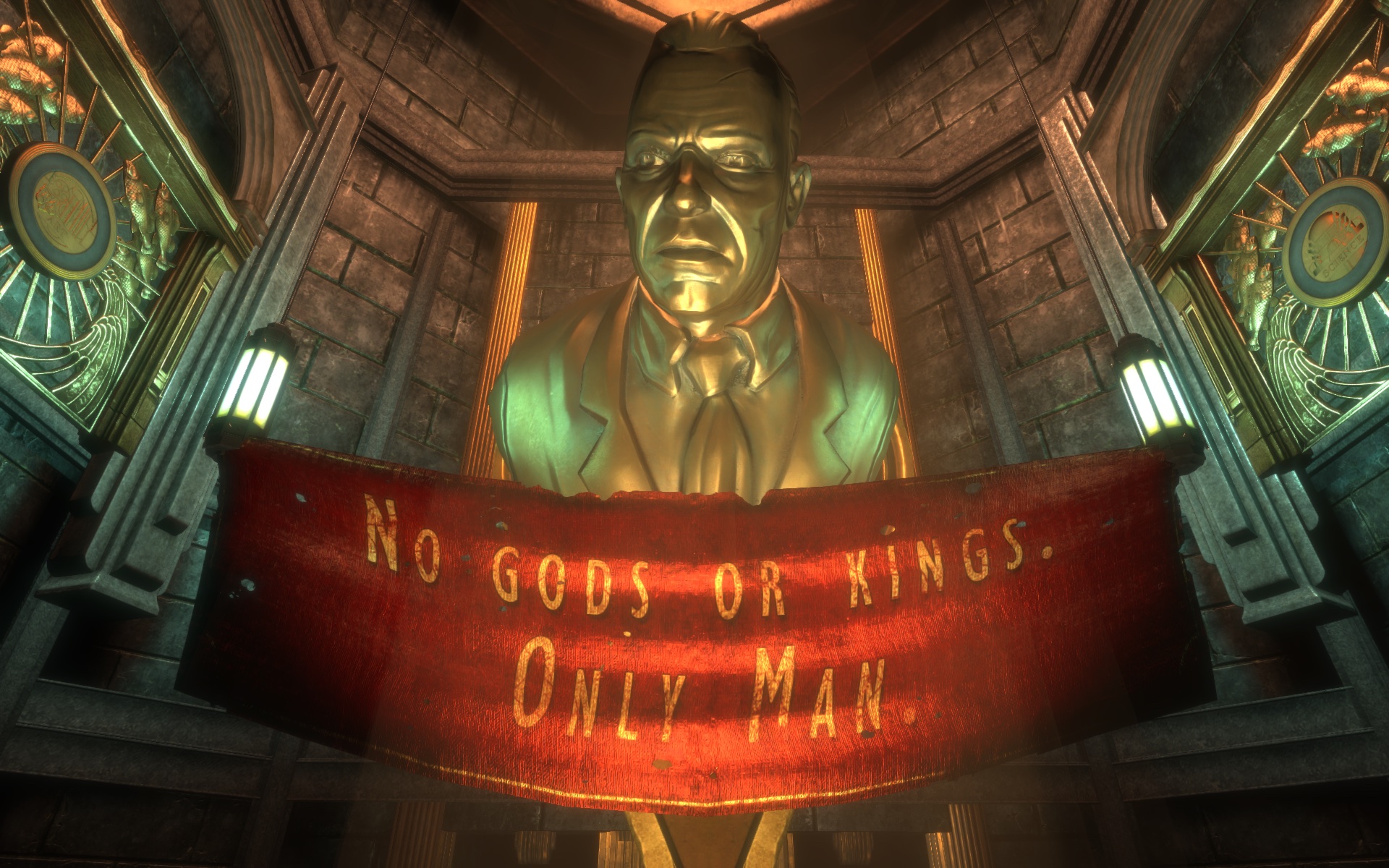
BioShock‘s gripping metaphysical plot, over-the-top art deco levels and motley cast of hauntingly broken personas intermingle to furnish an experience so riveting and simultaneously disturbing that it fueled (at the time perfectly reasonable) conversations about games as more than dopamine-fueled diversions. Studio Irrational Games’ 2007 first-person shooter takes the player on an imaginative journey through the fictional undersea city of Rapture, built by fanatical industrialist Andrew Ryan (whose name references Atlas Shrugged novelist and self-described objectivist Ayn Rand). The game set new standards for video games on so many levels, from its horrifying forms of self-augmentation, to its ecology of intersectional enemy behaviors and its sublime ways of channeling what amounted to a withering deconstruction of extremist modes of thought.
41. ESPN NFL 2K5
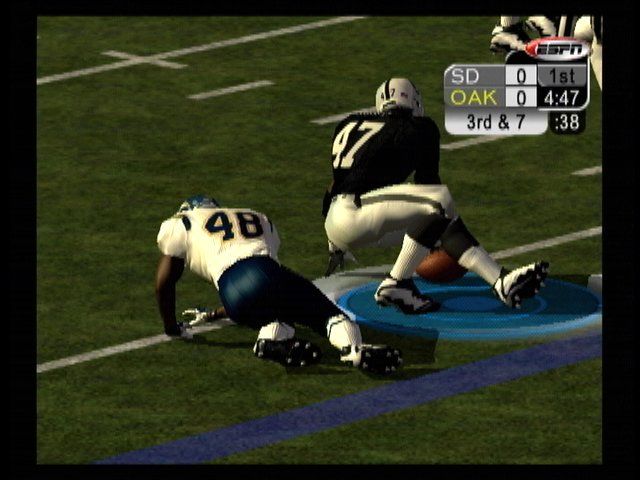
Sorry, Madden NFL fans, true football gaming fanatics know this is the best gridiron game ever made. Released in 2004 for the PlayStation 2 and Xbox, ESPN NFL 2K5 featured a standout franchise-building mode and in-game on-air talent from the eponymous sports network. It also marked a watershed moment in sports gaming lore: Publisher Sega priced the game at just $19.99, a fraction of what EA was charging for Madden NFL at the time. A frightened EA later scooped up the exclusive rights to the NFL and its players, making Madden the only name in town.
40. Pong

Snicker all you want about its two-dimensional graphics, Pong deserves a slot on this list because, as the first arcade cabinet to catch fire with the mainstream, it’s arguably most responsible for the modern video gaming phenomenon. A table tennis simulator developed by Atari and first released in 1972, the multiplayer game consisted of a pair of dial-controlled paddles and a bouncing ball—just enough to qualify it as the first sports video game. The popularity of the arcade version led to an in-home setup that was sold by Sears in 1975. And when imitators including Coleco and Nintendo followed, the first shots were fired in the console wars. Sure, by today’s standards it’s not as riveting as others on this list, but then that largely depends on who you’re playing against.
39. Castlevania

Pushing the limits of the NES’s 8-bit architecture, 1987’s Castlevania was a monster of a game, with stirring graphics, sophisticated physics (for such an early platformer) and unforgettable music that perfectly matched the title’s creepy feel. While nowhere as frightening as the yet-to-surface survival horror genre, it offered an experience in stark contrast to Nintendo’s whimsical Super Mario games. Exploring Dracula’s castle as vampire hunter Simon Belmont, players ran into some pretty haggard stuff. Bloodstained gates greet players off the bat, holy water and crosses were throwing weapons, and, oh yeah, you have to beat Death—and that’s not even the final boss.
38. Portal 2

Portal‘s unexpected balance of wit, dark comedy and captivating, reality-bending puzzles made it a surprise hit in 2007. Its sequel, Portal 2, built on that success by adding additional polish and puzzles that were more involved and complex when it launched in 2011. 3 million copies of Portal 2 were reportedly sold within three months of the game’s launch, proving that the franchise had turned into much more than just a casual puzzle game.
37. Braid
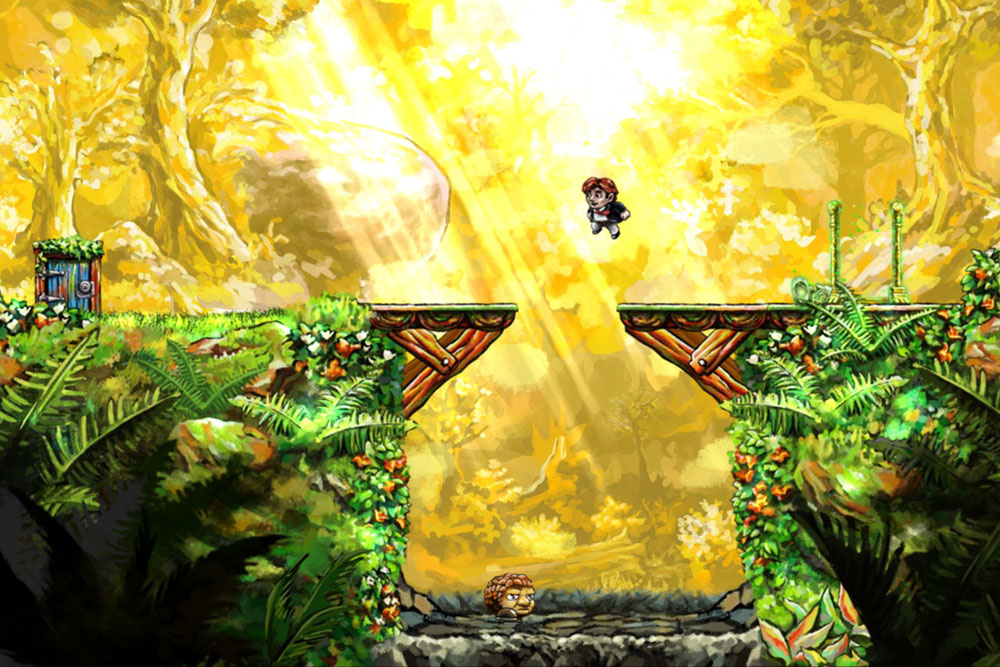
Jonathan Blow’s elliptical time-bending 2008 side-scroller was for many a tale of heartbreak and disruption that touched on various cultural grievances. Blow pushed back, suggesting such interpretations were too simplistic. Whatever the case, Braid plays like nothing else, the act of a mind capable of magisterially subverting conventional design ideas and player expectations while embedding concepts as grand as the nature of reality in the gameplay itself. No Man’s Sky co-creator Sean Murray compares Braid to a time machine: “It’s like Blow went back to the aesthetic of the late ‘80s and created a rift in time, like an alternate universe where we’d have gone in a different direction. Because Braid could have existed on the Amiga, and at the time it would have blown people’s minds. It would have completely changed how games developed.”
36. Fallout 3
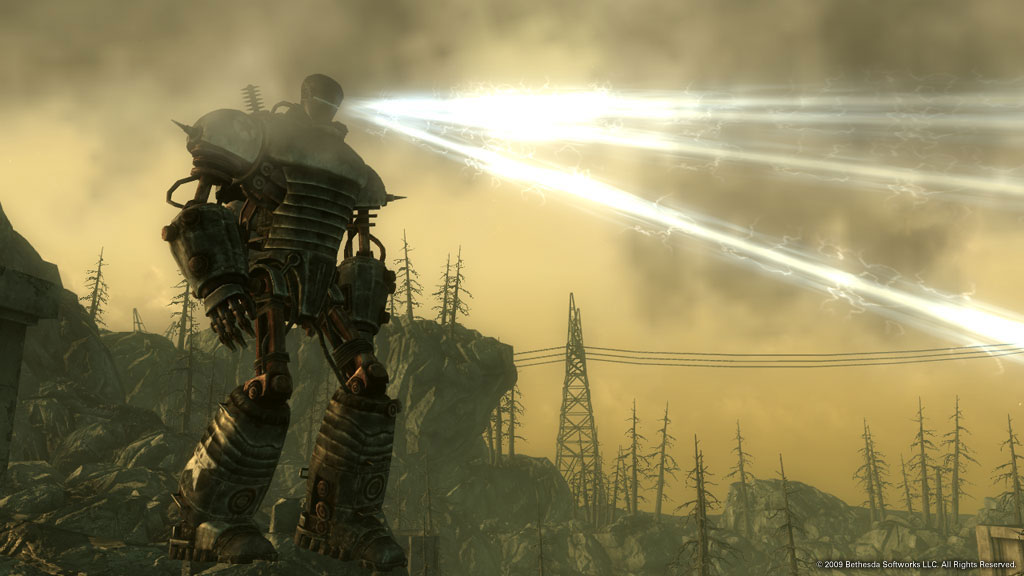
Interplay’s original Fallout arrived like a cloudburst after a PC roleplaying drought in the mid-1990s. But it took IP newcomer Bethesda’s application of exhaustive, obsessively traditional roleplaying ideals tempered in its fantasy Elder Scrolls games to craft an experience in 2008 that surpassed the original in virtually every way. Both vast yet densely textured, packed with unforgettable characters and ethical nuance, sonically bleak yet whimsically tuneful once you found the right radio station–Fallout 3 showed us what a haunting and freewheeling post-apocalyptic masterpiece could look like.
35. Galaga
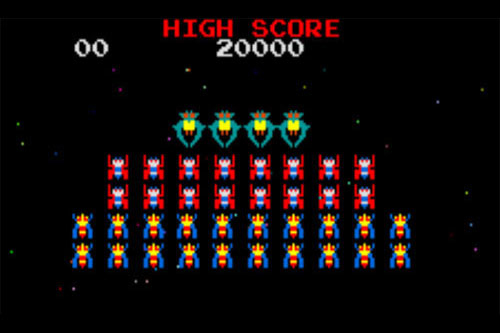
What’s the plot of Galaga? Who cares: You’ve got a bunch of quarters, and you want to blast a bunch of aliens. Released stateside in 1981, Galaga is the exemplar of the arcade’s golden age, a simple shoot-em-up where the only objective is to beat the other jerks’ high scores. (Serious players know the trick is to let the aliens tractor-beam your ship, then blast it free with another life, thereby getting double the firepower.) It’s one of the few old-school arcade games that’s still just as much fun to play today, thereby passing the often cruel test of time.
34. Red Dead Redemption

Red Dead Redemption‘s gorgeous high plains and scrub-filled landscapes, multilayered missions and sprawling story told with both the verve of a Leone and introspection of a Peckinpah, are just a few of the reasons Rockstar’s 2010 open-world opus deserves top honors on this list. The player follows former outlaw John Marston through an imagined, at times hallucinatory version of the West (circa 1911), where sudden gun duels and galloping chases ensue, counterbalanced by less treacherous diversions like herding cattle or playing mini-games like five finger fillet. Yes, it was Grand Theft Auto meets a Western, but in a way that proved Rockstar’s mettle as far more than mere mischievous satire-slinger.
33. Super Mario Kart

Transforming competitive racing into zany fruit-tossing fun, Super Mario Kart was much more than one of the smartest-looking games on the Super Nintendo. As the first in what would become a dynastic line of racers, this 1992 gem was full of kart-racing firsts: a circuit mode with varying degrees of difficulty, a split-screen versus mode so you could take on your friends and a battle mode to break up the monotony of straightforward sprints. And Super Mario Kart launched the series to a rocket start with memorable tracks like Rainbow Road, expert tactics like drifting and maddening equalizers like the lightning bolt.
32. Wolfenstein 3D
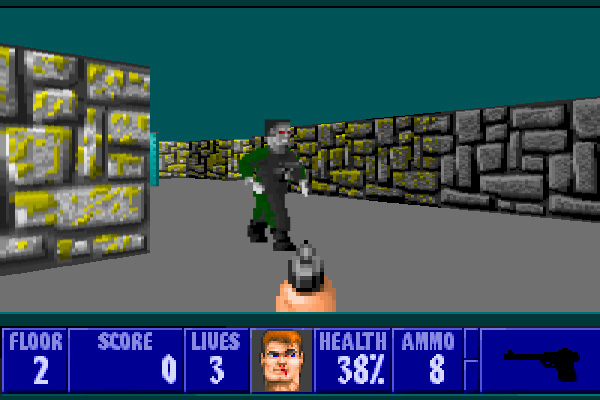
Achtung! If Doom is the father of modern first-person shooters, Wolfenstein 3D is their granddaddy. Made by id Software and released shortly before Doom in May 1992, Wolfenstein 3D cast players as William “B.J.” Blazkowicz, an Allied spy captured by Nazis in World War II. As Blazkowicz, your job is simple: Escape from Castle Wolfenstein and shoot a bunch of bad guys in the process, which was (and remains) the definition of “thoughtless catharsis”—words that to this day define so much of Wolfenstein 3D‘s progeny.
31. The Sims

Game designer Will Wright has said The Sims, first released in 2000, was intended as a satire of American consumer culture. Millions of players seem to have missed the joke, happily occupying themselves with the mundane tasks of running a digital minion’s life—from kitting out a new pad to managing bathroom breaks (or else). It innovated both the “sandbox” category of game in which “goals” are loosely (or not at all) defined, as well as the kind of minutely detailed task management that’s a common feature of so many games today.
30. Pokemon Red & Blue
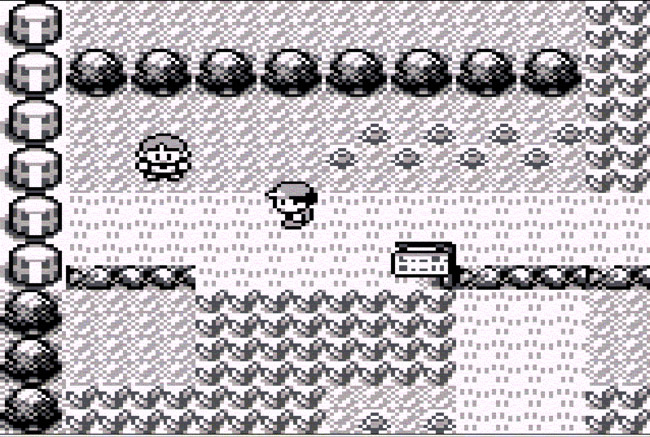
For many growing up in the 1990s, the Pokémon craze was unavoidable. And when Pokémon Red and Blue launched in 1998, those franchise-obsessed kids were given the chance to start a critter-filled adventure of their own–one they’d only to that point experienced through TV shows, toys and trading card games. Red and Blue also had all the hallmarks of a strong roleplaying game: addictive turn-based battles, a seemingly endless goal (to catch ’em all), plenty of attainable yet rewarding goals (earning gym badges, leveling up) and an expansive, uncharacteristically friendly world. The games also managed a feat all-too-rare in the games industry: a setup simple enough to appeal to children, but with layers of strategic depth sufficient to hook adults as well.
29. Myst

Myst is a perfect example of a monumentally influential game that would be almost excruciatingly painful to play today. The 1993 graphical adventure famously let players loose—sort of, since it consisted of a slow-loading series of beautifully rendered photos—on a mysterious island. Despite its now-clunky mechanics, it established an entirely new kind of fiction whose influence can be felt in everything from mythic sci-fi novels to the ABC television show Lost. Its vast popularity also helped establish the then-nascent CD-ROM format.
28. Donkey Kong

The first title designed by Nintendo mastermind Shigeru Miyamoto, 1981’s Donkey Kong not only brought Mario into being, it also popularized the platformer—games in which a character has to climb or jump onto platforms. After dominating the golden age of arcades, Donkey Kong went on to have a massive influence on future Nintendo titles, ranging from the NES’s Ice Climber to the Wii U’s New Super Mario Bros. U. Even today, demanding expert timing and patience, it remains a timeless joy to play. (What’s more, Donkey Kong was arguably the first game to feature hazardous barrels.)
27. Mortal Kombat
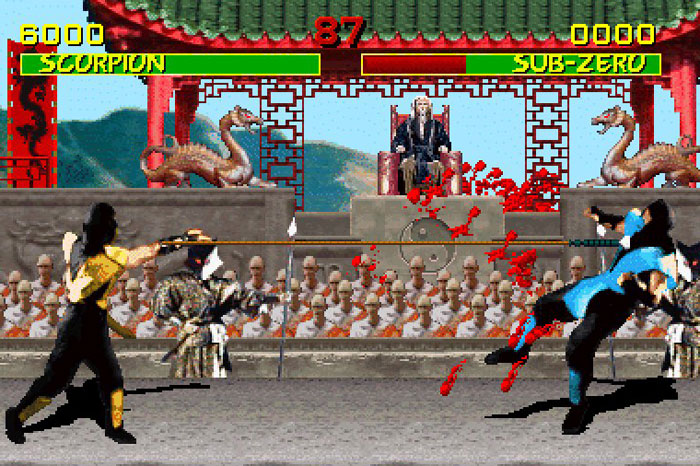
Mortal Kombat has always distinguished itself from the excess of fighting games that made their way from arcade cabinets to players’ living rooms with its unapologetically sadistic violence. Gore isn’t an afterthought to your blows in this 1992 brawler, it’s the main spectacle. Mortal Kombat and the controversy it stirred were crucial in shifting the video game market from one that was evidently aimed at kids, to one that could appeal to teens and young adults. But it wasn’t thanks to the game’s bloodiness alone: Its smooth controls, rewarding combinations and imaginative roster of characters earn it a top spot on our list.
26. StarCraft II: Wings of Liberty
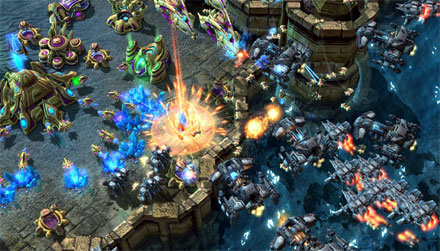
Like so many Blizzard games, this long-awaited StarCraft sequel released in 2010 was less about rolling out wildly new real-time strategy mechanics than honing the traditional rock-paper-scissors dynamic to perfection. Has there been a more finely tuned asymmetry between three discrete factions in an RTS series? Its enduring legacy can be summed up in three letters: MLG. As in “major league gaming,” or just “e-sports,” a form of competitive video gameplay that’s come to encompass a now very wide variety of genres.
25. Halo: Combat Evolved

Fun fact: It was Steve Jobs who first introduced Bungie’s Halo: Combat Evolved to the public, promising in 1999 that it would arrive simultaneously on Windows and Mac. That, of course, was before Microsoft acquired the studio and turned Halo into the definitive 2001 Xbox launch title, simultaneously proving shooters could work brilliantly on gamepads. Set on a mysterious artificial ring-world, players take up as Master Chief, a faceless, futuristic soldier fighting the alien Covenant and, later, the zombie-like Flood. The single-player campaign offered a gripping storyline that brought plot to the fore for one of the first times in a mainstream shooter, though some grumbled about its repetitive level design. The multiplayer, meanwhile, offered one of the finest such experiences of any shooter in history, replete with sniper rifles, sticky grenades, vehicles and other twists.
24. Final Fantasy VII

While some would vote Final Fantasy VI the better game, 1997’s Final Fantasy VII is arguably the bolder one in this anything-but-final roleplaying series. Laying complex polygonal graphics over beautiful pre-rendered backgrounds, Japanese developer Squaresoft took advantage of the PlayStation’s compact-disc drive to craft an experience Sony rival Nintendo—who’d rejected Sony’s pitch for a disc-based add-on to the Super Nintendo—simply couldn’t. The operatic, labyrinthine and often wonderfully weird tale of ecologically minded heroes out to save their “living” planet from corporate energy raiders proved the most popular in the series, selling over 10 million copies worldwide and prompting perennial cries for a remake (that’s finally happening).
23. Microsoft Flight Simulator X

Next time you’re on a commercial flight, ask your pilot if they ever played Flight Simulator growing up. Odds are the answer will be “yes.” The hyper-realistic series puts players in the cockpit of everything from tiny Cessnas to massive jumbo jets. Obsessed flight simmers have built gigantic, multi-screen rigs in basements worldwide to better imitate the real thing. 2006’s Flight Simulator X, meanwhile, let players into the control tower, giving birth to a diehard community of simmers who to this day spend hours flying and directing mock routes.
22. GoldenEye 007
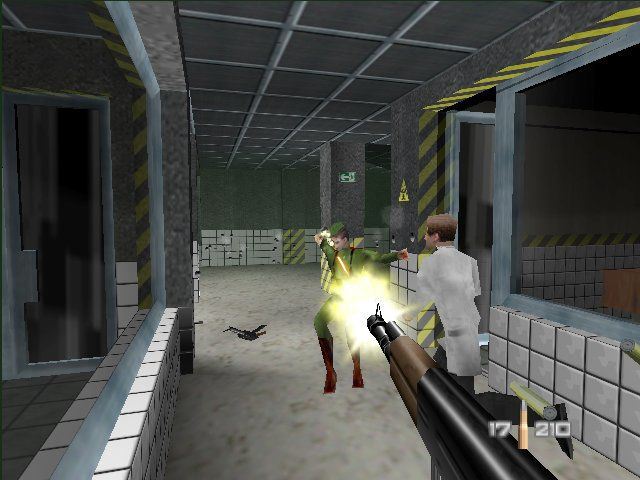
For whatever reason, it’s not often you get a decent video game based on a movie. Rare’s 1997 Nintendo 64 shooter GoldenEye 007, which ties into the 1995 James Bond film, is a glorious exception. A heart-pounding single-player campaign let gamers slip on the (doubtless immaculately tailored) shoes of the man with a license to kill. But as with other shooters on this list, multiplayer is where GoldenEye truly shines. Grenades bounce off walls, golden guns perform single shot kills, and cheaters prefer Oddjob because he’s a smaller target. It was, for many, the reason to buy a Nintendo 64. One word of advice: Don’t even bother with the Klobb.
21. Diablo II
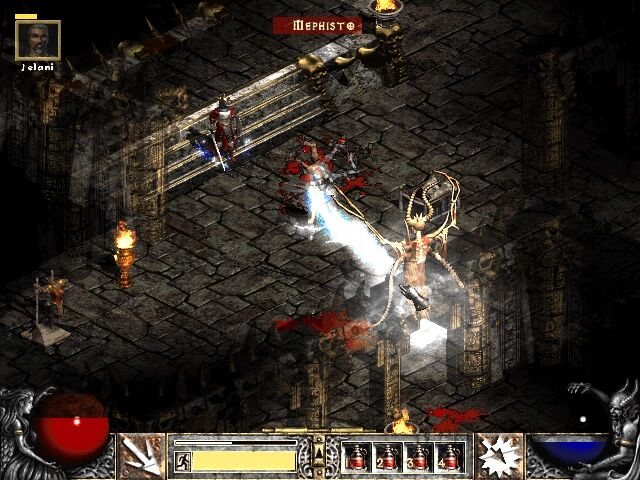
Diablo II is arguably the best role-playing game of all time, the best dungeon-crawler of all time and the best PC game of all time. And that’s before you get to everything it influenced. Released in 2000, Diablo II evolved the clickfest, hack-n-slash gameplay of its predecessor in numerous ways (all of which go into its best-of-the-best-of-the-best case file). Most important for future games—especially today’s widely popular free-to-play mobile games—was how Diablo II seemed to perfect the feedback loop of effort and reward to keep the dopamine jolts flowing through its endless, randomly generated levels.
20. Zork

Zork was an early text-only adventure game, though it wasn’t the first—that honor goes to Colossal Cave Adventure. Released in 1980, it delivered the player into an extraordinarily rich and vivid universe, despite its total lack of graphics. To this day the opening lines induce waking hallucinations in old-school gamers: “You are standing in an open field west of a white house, with a boarded front door. There is a small mailbox here.” What made Zork work, aside from its homespun, minimalist eloquence and self-referential wit (it was full of sly references to, among other things, Colossal Cave Adventure), was its eerily advanced text parser, which accepted commands from the player in plain English and turned them into actions in the game. Zork’s influence on later adventure games can’t be overstated—as an homage, the entirety of Zork was inserted into Call of Duty: Black Ops as an Easter egg.
19. Space Invaders

Influenced by the outer space-obsessed late 1970s, this early arcade shooter was a landmark in the early video game invasion. Designed in 1978, it rode the Atari 2600 into American homes in 1980, letting people blast rows of marching aliens from the comfort of their couches. In pop culture terms, it captivated a public weened on War of the Worlds, wowed by Star Wars and waiting for E.T. But as a game, Space Invaders‘ pixelated baddies moved closer and faster—with crazy-making sound effects to match—players’ pulses kept pace. Playing the classic version today is like watching a 1950s monster flick, partly comedic reflection, seeing what once gave us thrills. But without Space Invaders, there’d be no Halo, making it a worthy quarter spent, even today.
18. Rise of the Tomb Raider

With its expansive environments and crafty puzzles, this 2015 installment of Crystal Dynamics’ vaunted Tomb Raider series is easily its best (read TIME’s review here). It transcends the tired run-and-fight mechanic that dominates so much of the action-adventure genre by instilling genuine feelings of wanderlust and peril. Here, players might dangle from grappling lines tenuously tethered to shimmering walls framing glacial cathedrals, or explore optional booby-trapped tombs, each a study in the art of not repeating puzzles or level design. It’s survivalism at its best, and a stunning exemplar in the studio’s reinvention of an iconic 1990s franchise.
17. Half-Life 2

Half-Life 2 showed us in 2004 how a developer could approach a genre (the first-person shooter) given to bang and bluster, and dignify it with a mind-bending dystopian tale that at times rivaled the literary. Taking up as a weaponized theoretical physicist, players explored a paranoiac’s world, questioning the nature of everything as they cut through waves of alien Combine before taking hold of an ingenious tool that made gravity itself a plaything. Alas, like Chaucer’s Canterbury Tales, Charles Dickens’ The Mystery of Edwin Drood or Mervyn Peake’s Gormenghast, we may never know how protagonist Gordon Freeman’s tale ends. But it’s a measure of how deeply studio Valve’s work resonated, that when it comes to lists of most anticipated sequels, gamers talk of little else.
16. Grand Theft Auto III

Before Grand Theft Auto III, game levels were essentially designed as a series of boxes. Rockstar’s crime epic broke that pattern in 2001, ushering in a golden age of go-anywhere, do-anything open worlds. Designers since have been trying to recapture the sense of freedom and possibility created by GTA III’s gritty take on New York City, which allowed players to amass a criminal empire—or simply manage a mundane day job, like schlepping citizens around in taxis or putting out fires.
15. Counter-Strike
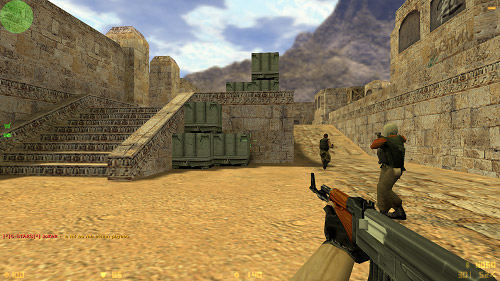
If you’ve ever had trouble wrapping your head around the fact that e-sports is on pace to become a billion-dollar industry by decade’s end, just spend half an hour watching world-class teams play Counter-Strike. Originally designed in 1999 as a modification of Half-Life, Counter-Strike and its modern incarnations are some of the top e-sports games in the world. Players are divided into two teams, “terrorists” and “counter-terrorists,” then the former tries to bomb an objective or kidnap hostages while the latter labors to stop them. Watching the world’s best Counter-Strike players is often more fun than actually playing yourself—hence the rise of game-streaming sites like Twitch, acquired by Amazon in 2014 in a roughly billion-dollar deal.
14. Quake
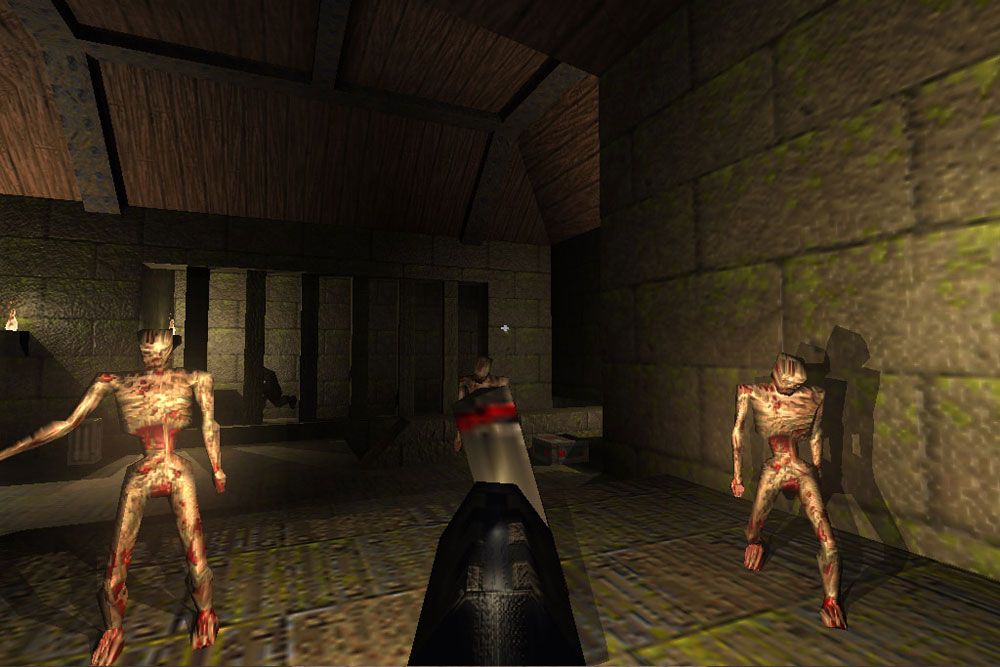
Where Doom first popularized the first-person shooter, 1996’s Quake shifted the genre to a more spatially plausible, performance-hungry 3D world. The single-player campaign, which again pits players against the forces of evil (though with a Lovecraftian twist) is perfectly fine. But Quake‘s real contribution was in blowing the lid off multiplayer combat. Thanks in part to speedier Internet connections, Quake players—who formed “clans” of like-minded ballistic tacticians—could find deathmatch opponents over the web. And the game’s new fully polygonal engine allowed for techniques now a staple of the genre, like bunny-hopping (constant jumping to avoid enemy fire) and rocket-jumping (using a rocket launcher to propel yourself to advantageous positions).
13. SimCity 2000
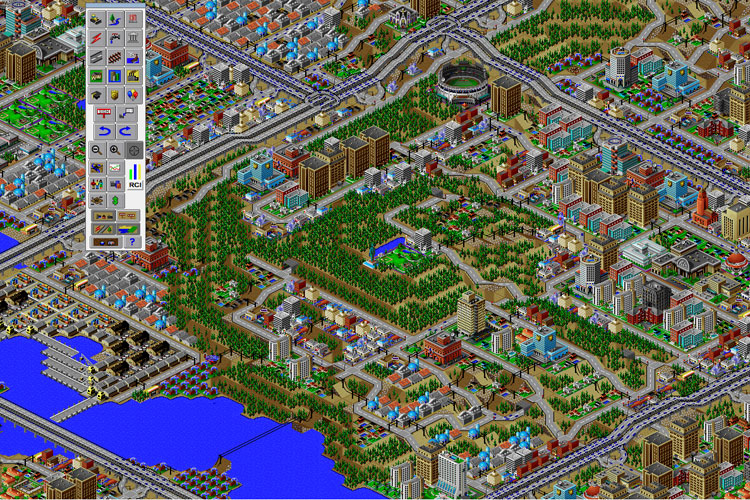
By no means the first city-builder, SimCity 2000 undoubtedly influenced all those that succeeded it. The 1994 game established a near-perfect balance between the inputs and outputs of running a (virtual) metropolis. Graphics that rendered the corner-view of each building, bridge, road, hill and valley made the series look more true-to-life. And the constant chatter from policy advisers as well as feedback from the local newspaper—precursors to modern notifications—made players’ roles as mayors feel particularly realistic.
12. Final Fantasy VI

Super Nintendo players knew Final Fantasy VI as Final Fantasy III for years after its release in 1994, because no one expected this Japanese series to become so popular stateside that the original II and III would be localized and the series renumbered. What made Final Fantasy VI one of the exemplars—not just of console roleplaying, but the genre in general—was how pitch-perfectly it synthesized so many different tangents: real-time battles, summonable magic-bestowing creatures, indelible characters, party-swapping, heartrending plot twists, an unforgettably iniquitous villain, a four-minute play-along opera and its artful inflection of dark fantasy steampunk.
11. Sid Meier’s Civilization IV
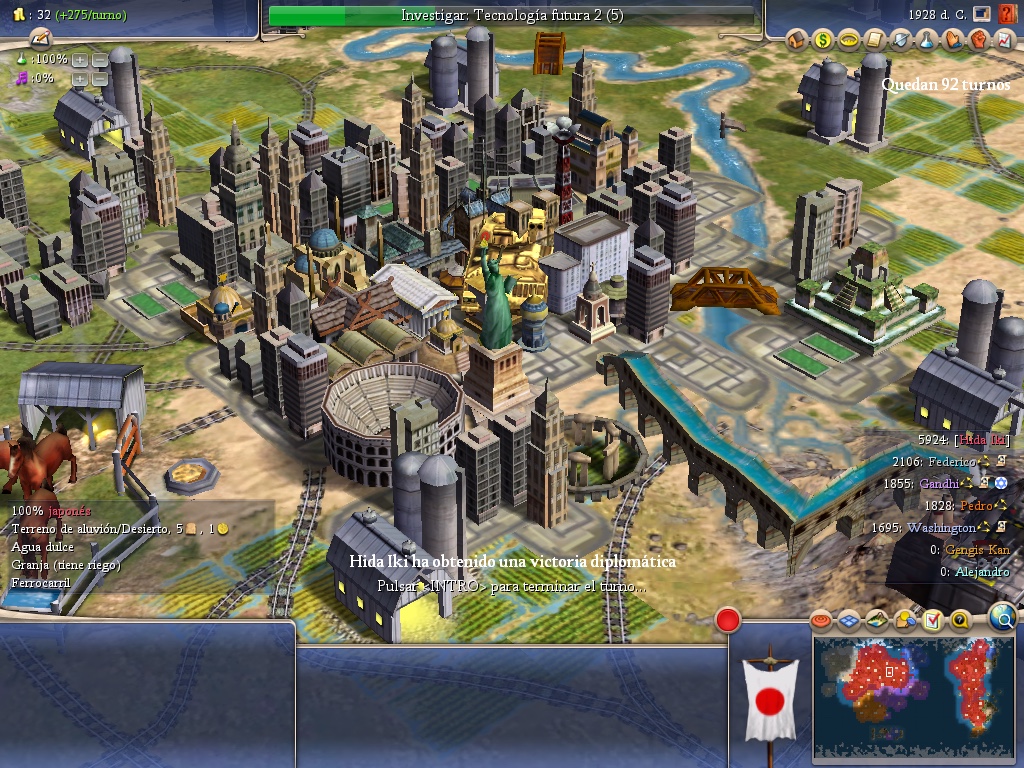
History buff Sid Meier had played and admired both Maxis’s SimCity and Bullfrog’s Populous when he set out to design something grander that intermingled warfare, exploration, diplomacy, city-building and elements of political philosophy. 1991’s Civilization launched a series of widely played, deeply loved turn-based strategy epics in which players lead a society from the stone age far into the distant future. Civilization IV, released in 2005, was the apotheosis of the series, and universally acclaimed for its many innovations—from its 3D graphics to its much-improved artificial intelligence. It’s arguably the greatest strategy game ever made, and remains a reference design for developers today.
10. World of Warcraft
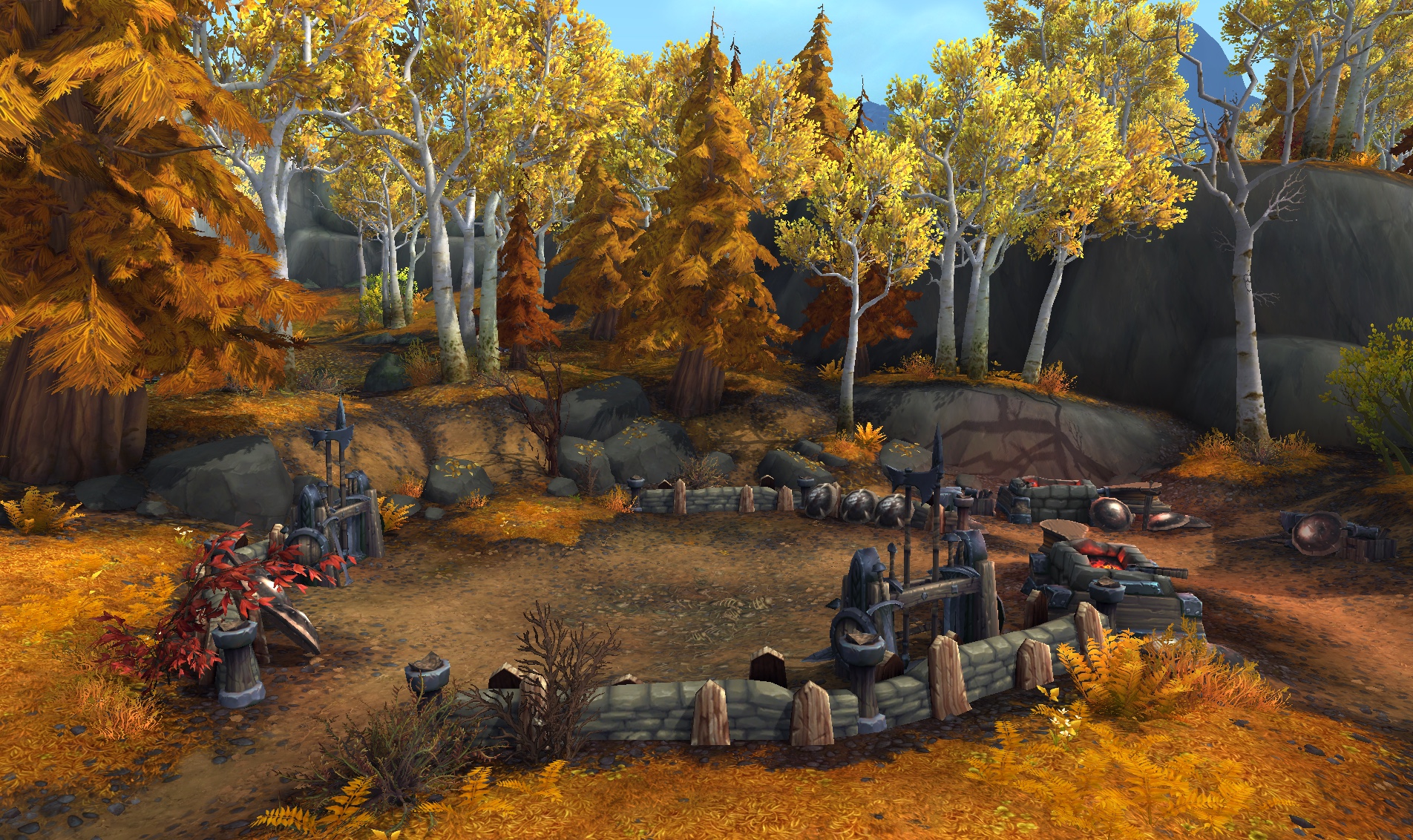
Blizzard’s bracing 2004 fantasy simulation World of Warcraft introduced millions of players to the concept (and joys and frustrations) of massively multiplayer online worlds. Like so many influential products, it didn’t invent so much as refine and perfect—from the way gamers meet-up and socialize online to how to populate large digital worlds with satisfying stuff to do. It was one of the first games to render a landmass that felt “real” and un-gated, allowing players to run from one end of the continents in its fictional Azeroth to the other without seeing a loading screen. It also de-stigmatized and normalized online gaming by, over time, revealing that its millions of players (some 12 million at its peak in 2010) were no different from non-players. The massive revenue it generated for years also spurred legions of game designers to try to create similar online playgrounds.
9. The Oregon Trail
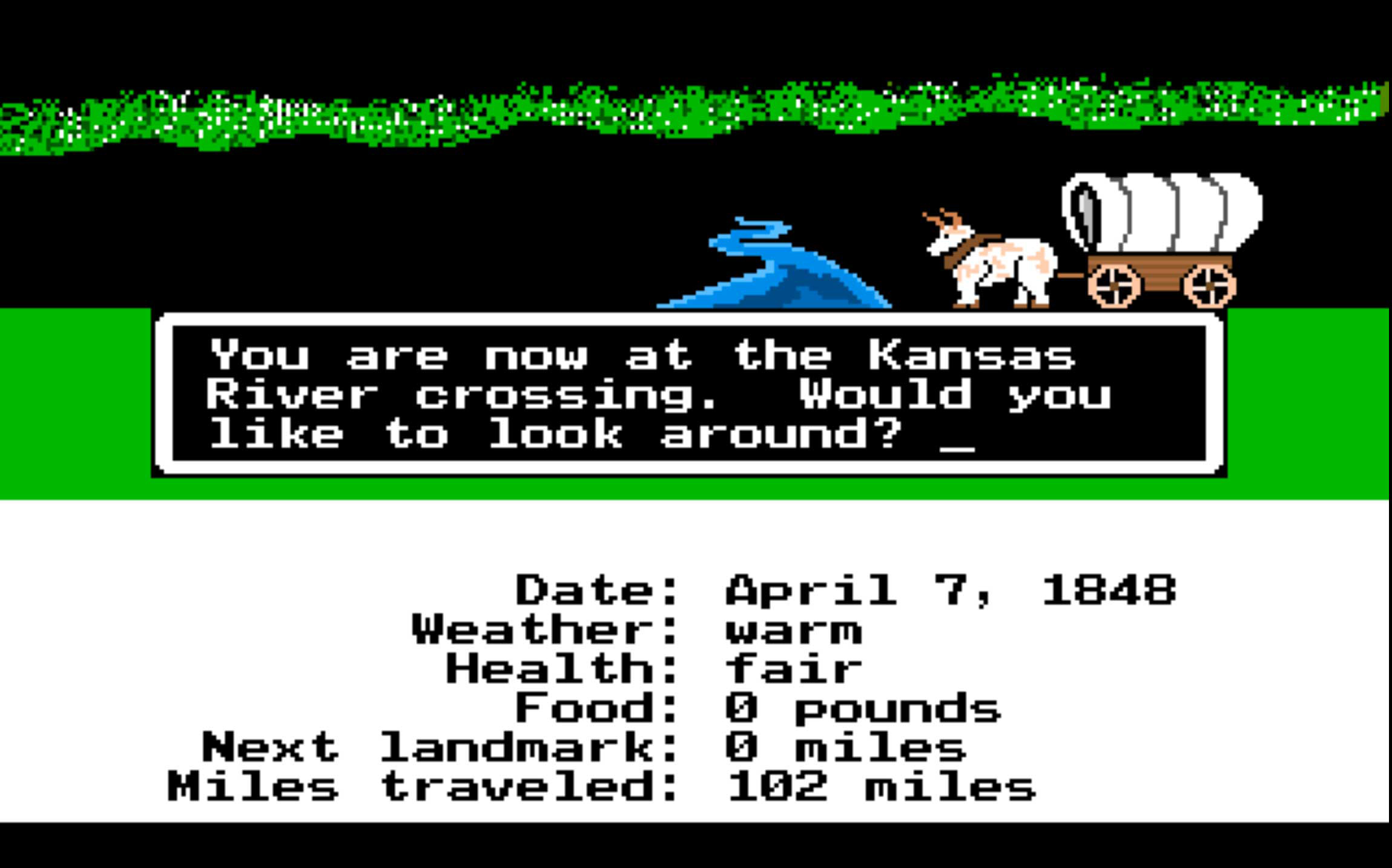
“You have died of dysentery.” The Oregon Trail’s notorious proclamation of ultimate doom was only part of the software’s brutal charm. As a simulation of Westward Expansion consisting of choose-your-own-adventure strategy and hunt-to-survive gameplay, it was rudimentary. But in part because it was originally developed in 1971 by three student teachers at Carleton College in Minnesota as an educational tool, The Oregon Trail found a captive—and willing—audience in thousands of classrooms across the country equipped with Apple II computers in the 1980s. There, it helped introduce an entire generation (several, in fact) to video games.
8. Super Mario Bros.

It’s 1985, the Nintendo Entertainment System has invaded American living rooms, and brothers Mario and Luigi are running rampant through the Mushroom Kingdom. They’re stomping on goombas, de-shelling winged turtles, bashing question mark blocks and lobbing fireballs—like this is totally normal plumber behavior. (Clearly the 1970s drugs worked.) Yet however bizarre this side-scroller seems at face value, it’s also as insanely fun to play today as it was three decades ago. And in the wake of Mario’s nonstop running, this platformer par excellence turned the NES into a must-have appliance, Mario into a beloved gaming franchise and Nintendo into a household name. Talk about grabbing the flag.
Get it now
7. The Legend of Zelda

Sure, there’s undeniable nostalgia associated with this 1986 NES classic, but there’s no arguing how engrossing the original Zelda was to play. Mixing upgradable weapons with a (then) sprawling map and some pretty good puzzles, Link’s original adventure delivered an experience unlike anything console players had experienced. Shigeru Miyamoto, the game’s legendary designer, set out to create a world that felt like a “miniature garden that [players] can put inside their drawer.” And through the cartridge’s ability to save games (the first console title to offer the option) they could do exactly that. Instead of toiling to beat Zelda in a single sitting, players could instead pace themselves, scrutinizing every last nook and cranny of Hyrule at leisure—an obsession that’s continued through all 18 games (and counting) in this storied series.
6. Minecraft

Swedish studio Mojang’s indie bolt from the blue turns out to be that rare example of a game whose title perfectly sums up its gameplay: you mine stuff, then you craft it. At its simplest, Minecraft is a procedurally generated exercise in reorganizing bits of information—all those cubes of dirt and rock and ore strewn about landscapes plucked from 1980s computers—into recognizable objects and structures and mechanisms. Or put another way: part spreadsheet, part Bonsai pruning. Since its launch in November 2011, it’s sold over 100 million copies, colonized virtually every computing platform, spawned an official “Education Edition” tailored for classrooms and inspired feats of mad grandeur, like this attempt to model staggering swathes of George R.R. Martin’s Song of Ice and Fire. Has there ever been a game as impactful as this one?
5. Ms. Pac-Man

The “Ms.” may have gotten her start as a knockoff of the original pellet-chomping arcade cabinet, but she’s got way more moves than her husband. An unlicensed modification of 1980’s Pac-Man, this 1982 game was initially called “Crazy Otto”—until the developers sold it to Midway, which branded it Ms. Pac-Man to lure female gamers. But Ms. Pac-Man did much more than put a bow on an already wildly popular game. With four mazes (compared to Pac-Man’s one), smarter ghosts and on-the-move fruit bonuses, it quickly obsoleted the original. The fact that it’s still fun to play gives it a high perch on this list. Admit it—if you came across a Ms. Pac-Man cabinet in the wild, you’d drop a quarter in. Heck, you’d probably have to wait in line.
4. Doom

Quick, name your favorite modern first-person shooter. Maybe it’s Call of Duty, or Halo, or Counter-Strike. All of those games—and dozens, if not hundreds more—owe an immense debt to Doom. Developer id Software’s 1993 classic pit an unnamed space Marine against the forces of Hell, plunging gamers into a high-intensity battle for Earth. Another id title, Wolfenstein 3D, may have arrived a year earlier. But Doom became a true phenomenon, introducing millions of gamers to what have become bedrock principles of the genre, from frenzied multiplayer deathmatches to player-led mods that can alter or completely overhaul a game’s look and feel.
3. The Legend of Zelda: Ocarina of Time
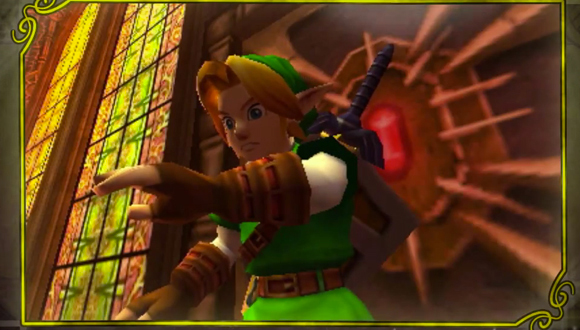
Longtime pointy-eared and green-trousered protagonist Link’s 1998 Nintendo 64 odyssey through a vast, three-dimensionally exquisite version of Hyrule routinely tops “best” games lists for several reasons. Its approach to letting players explore a 3D world was so consummate and sublime, that it felt less like Nintendo shoehorning eureka concepts into a new paradigm, than the paradigm bending to Nintendo whims. Its clockwork puzzles, artful area and dungeon levels, and breakthrough interface—we can thank Nintendo for intuitive lock-on targeting that preserves our freedom to execute other actions—were so groundbreaking, they’re reverently hat-tipped by just about every designer, prompting some to call the game a “walking patent office.”
2. Super Mario 64
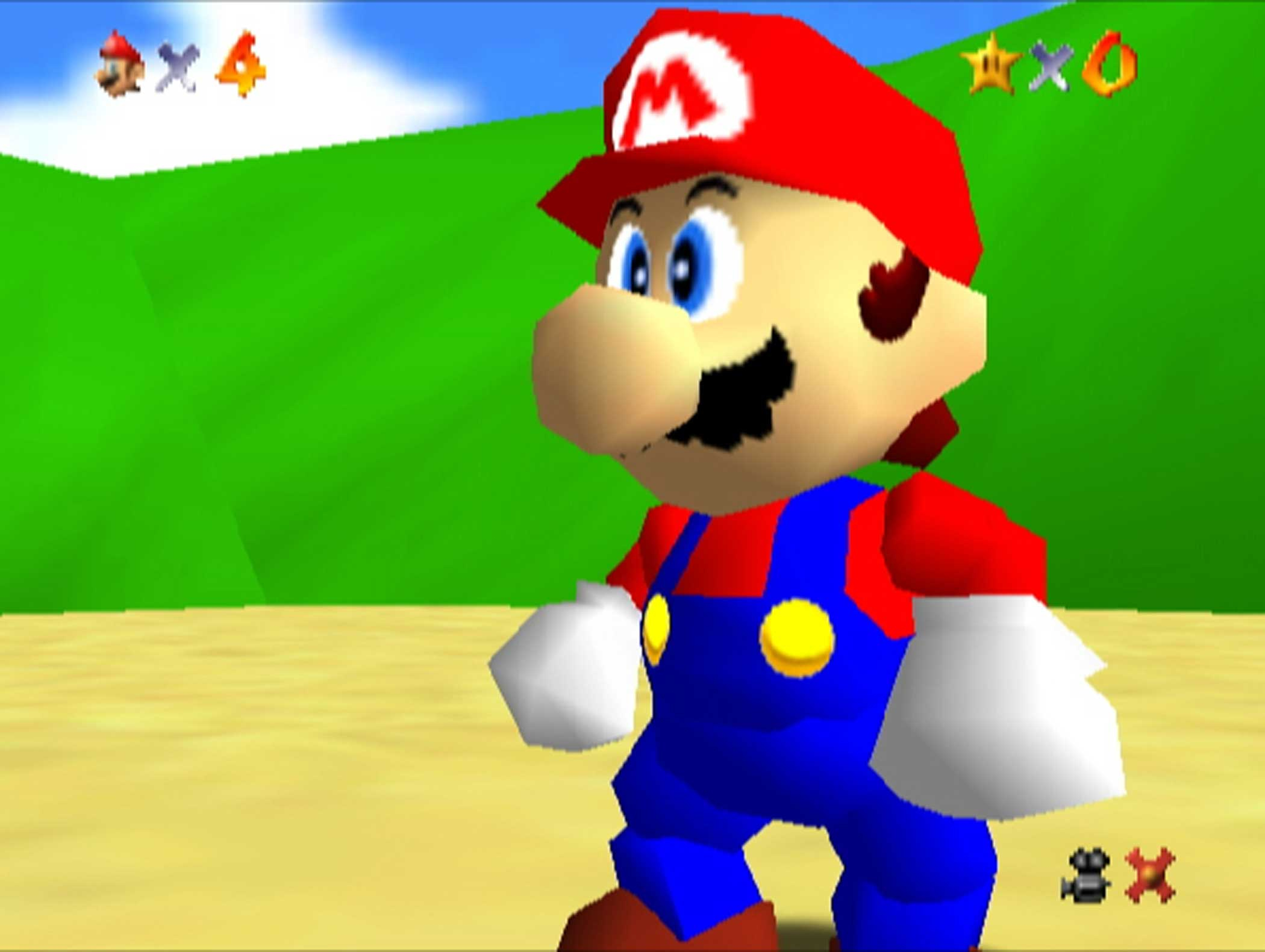
Mario’s brick-breaking, Goomba-stomping antics were enough to mesmerize the world’s gamers in Nintendo’s idiosyncratic side-scrolling Super Mario Bros. games. But 1996’s Super Mario 64 transported Nintendo fans into Mario’s universe as no other game in the series had, simultaneously laying out a grammar for how to interact with 3D worlds (and in its case, divinely zany ones). At more than 11 million copies sold, it was one of the bestselling games for the Nintendo 64, but its real impact was arguably off-platform, where it tectonically shifted the design imperatives of an entire industry. As Rockstar co-founder and Grand Theft Auto V cowriter Dan Houser put it: “Anyone who makes 3-D games who says they’ve not borrowed something from Mario or Zelda [on Nintendo 64] is lying.”
1. Tetris
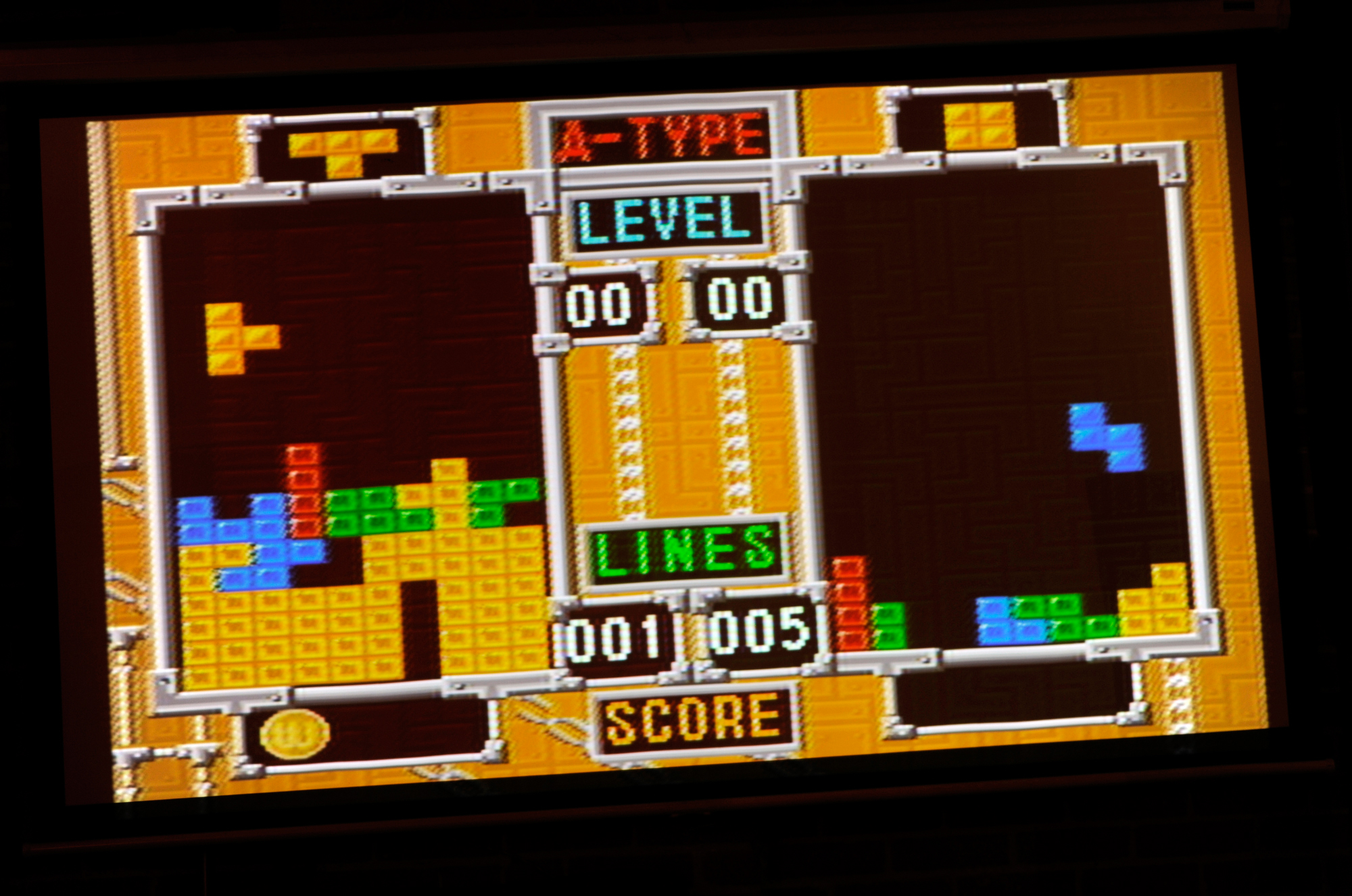
Designed by a Russian computer scientist, mass-distributed by a Japanese company and devoured by gamers—casual or compulsive—around the world, Tetris has been a global phenomenon since its arrival in 1984. In 1989, Nintendo put the legendary tile-matching puzzler on the NES and Game Boy, where it catapulted the latter to meteoric success. It’s been available on nearly every platform since, a testament to our never-ending zeal for stacking blocks. However addictive, Tetris also appears to have modest health benefits, like cravings control and PTSD prevention. Devotees would probably nod and note how much a high-scoring, in-the-zone session can feel like meditation. And speaking of Zen, the game’s also generated its share of life lessons, including this apocryphal truism: “If Tetris has taught me anything, it’s that errors pile up and accomplishments disappear.”
More Must-Reads from TIME
- Donald Trump Is TIME's 2024 Person of the Year
- Why We Chose Trump as Person of the Year
- Is Intermittent Fasting Good or Bad for You?
- The 100 Must-Read Books of 2024
- The 20 Best Christmas TV Episodes
- Column: If Optimism Feels Ridiculous Now, Try Hope
- The Future of Climate Action Is Trade Policy
- Merle Bombardieri Is Helping People Make the Baby Decision
Write to Matt Peckham at matt.peckham@time.com